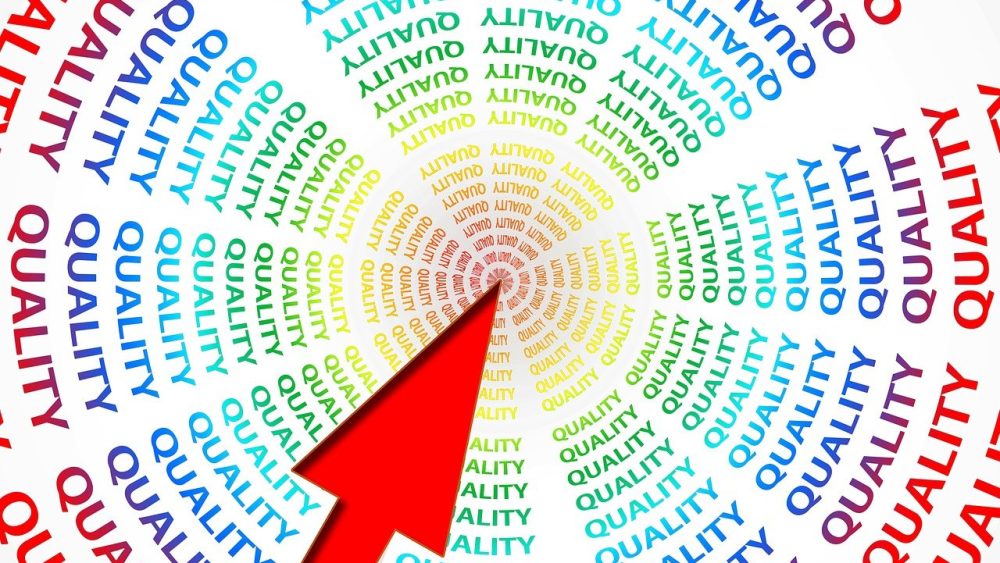Quality is crucial in today’s competitive business environment as it directly impacts customer satisfaction, brand reputation, and overall success. High-quality products and services not only meet customer expectations but also foster trust, loyalty, and repeat business. Quality is a key differentiator that can provide a competitive advantage and drive long-term profitability. This is all required while still keeping the product or service at a cost that is afodable for the customer. Its no longer high quality linked to high price.
Building a strong quality culture within an organisation is not just about implementing processes, systems, and tools. At its core, quality culture relies heavily on the human element – the attitudes, behaviors, and mindsets of employees at all levels. A quality culture thrives when individuals are engaged, empowered, and committed to pursuing excellence in their work.
Continuous improvement is at the heart of quality culture. Organisations that foster a culture of continuous improvement encourage employees to identify opportunities for enhancement, experiment with new ideas, and learn from both successes and failures. By embracing a mindset of continuous improvement, organisations can adapt to changing market demands, stay ahead of the competition, and consistently deliver high-quality products or services.
Quality is measured and perceived differently depennding on the product or service that the organisation offers. High-quality products are designed and manufactured to meet or exceed customer expectations, ensuring consistent performance, minimal defects, and a longer lifespan. Service quality encompasses factors such as responsiveness, empathy, assurance, and reliability.
Quality can be evaluated across multiple dimensions, including:
- Performance: The ability of a product or service to meet its intended functions and deliver the desired outcomes.
- Reliability: The consistency and dependability of a product or service in performing as expected over time and under various conditions.
- Aesthetics: The visual appeal, design, and overall perception of a product or service.
- Perceived Quality: The subjective evaluation of quality by customers based on their experiences, expectations, and perceptions.
- Service Quality: The quality of interactions, support, and overall experience provided to customers throughout the service delivery process.
Quality relies on various tools and techniques to ensure effective implementation and continuous improvement. Some commonly used tools and techniques include:
- Root Cause Analysis (RCA): A problem-solving methodology used to identify the underlying causes of defects or issues and implement effective corrective actions.
- Data Visualization and Monitoring: Techniques used to transform complex data sets into understandable visual formats, allowing organisations to track performance metrics and quickly identify areas for improvement.
- Statistical Process Control (SPC): The use of statistical techniques to monitor and control processes, ensuring they operate within defined limits and produce consistent results.
- Quality Function Deployment (QFD): A structured method for translating customer requirements into appropriate technical requirements and design specifications.
- Failure Mode and Effects Analysis (FMEA): A systematic approach to identify potential failure modes, their causes, and effects, and implement preventive actions.
Building a quality culture within an organisation is crucial for achieving and sustaining excellence in products, services, and processes. It requires a comprehensive approach that involves:
Leadership Commitment: Top management must demonstrate unwavering commitment to quality by establishing a clear vision, setting quality objectives, and allocating necessary resources.
Employee Involvement: Employees at all levels should be actively involved in quality efforts. This can be achieved through quality circles, suggestion schemes, and cross-functional teams. Employees should be empowered to identify and address quality issues, propose improvements, and contribute to decision-making processes related to quality.
Continuous Training: Organizations should invest in ongoing training and development programs to equip employees with the necessary knowledge, skills, and tools to understand and implement quality principles and practices.
Quality Recognition: Recognising and rewarding individuals and teams for their contributions to quality is essential for fostering a quality culture. Celebrating quality achievements reinforces desired behaviors and motivates employees to continue their efforts towards continuous improvement.
As customer expectations continue to evolve, quality culture will need to prioritise customer-centricity and agility. Organisations will need to be responsive to changing market demands, embrace innovation, and continuously improve their products and services to meet or exceed customer expectations.
Encourage your organisation to adopt a quality-first mentality by taking the leap towards continuous improvement through regular reviews of processes and products. As part of this commitment, establish recognition systems that celebrate quality achievements and motivate staff to actively pursue excellence. This approach fosters a culture of quality as well as ensures sustained organisational success.
Quality is not just a destination but a continuous journey of excellence.


